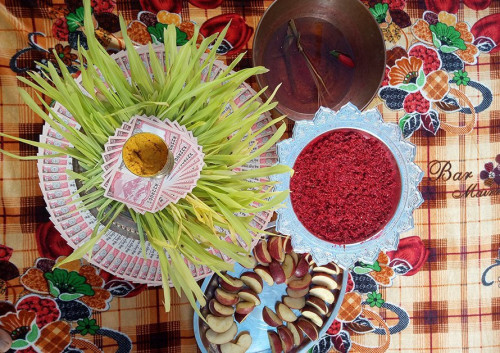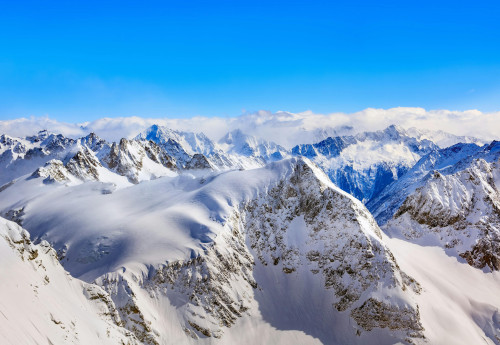6th May, 2023
Private Trek in Nepal : A Comprehensive Guide
- Magnificent Himalayan Treks
Introduction
Nestled amidst the Magnificent Himalayas, Nepal is a country renowned for its breathtaking beauty and rich cultural heritage. The allure of this enchanting land beckons adventure seekers from around the globe to start on unforgettable treks. While group treks are a popular choice, there is a growing trend towards private treks that offer a host of benefits and unparalleled experiences. In this article, we will delve into the world of private treks in Nepal, exploring the advantages they offer and providing you with valuable insights to plan your perfect adventure.
Benefits of Private Treks
Flexibility and customization: One of the greatest advantages of private treks is the flexibility they afford. Unlike group treks, private treks allow you to tailor every aspect of your journey to your preferences. Whether you wish to modify the itinerary, adjust the pace, or explore hidden trails, the choice is yours.
Personalized itineraries: With a private trek, you have the freedom to create a personalized itinerary that aligns perfectly with your interests and fitness level. You can choose to focus on specific regions, include cultural experiences, or indulge in wildlife encounters, ensuring a journey that resonates with your desires.
Tailored pace and difficulty: Private treks cater to your individual capabilities and preferences. You can set the pace that suits you best, allowing for a comfortable and enjoyable experience. Whether you are an avid hiker seeking a challenging adventure or a leisurely explorer, your private trek can be customized to meet your desired level of difficulty.
Exclusive experiences: Private treks provide unparalleled opportunities for exclusive experiences. With your own dedicated guide, you can delve deeper into the local culture, interact with remote communities, and witness traditional festivals and rituals firsthand. These authentic encounters create lasting memories and foster a deeper connection with the land and its people.
Selecting the Perfect Private Trek
Researching trekking routes: The first step in planning a private trek is researching the various trekking routes available in Nepal. Each route offers its own unique landscapes, challenges, and cultural experiences. Consider factors such as altitude, duration, and difficulty level to find a trek that aligns with your preferences and abilities.
Considering personal preferences and fitness level: It is crucial to take into account your personal preferences and fitness level when selecting a private trek. Assess your hiking experience, physical fitness, and endurance to ensure you choose a trek that matches your capabilities and allows for a safe and enjoyable journey.
Consulting with local trekking agencies: Local trekking agencies possess invaluable knowledge and expertise regarding private treks in Nepal. Consult with them to gain insights into the best routes, hidden gems, and logistical considerations. Their guidance will help you make informed decisions and create a customized trekking experience.
Evaluating safety measures: Safety should be a top priority when embarking on any trek. Evaluate the safety measures in place for your chosen trekking route, including the availability of emergency services, communication networks, and rescue operations. It is essential to be well-prepared and informed to ensure a secure and worry-free journey.
Popular Private Trekking Routes in Nepal
Annapurna Circuit Trek: The Annapurna Circuit Trek is a legendary trekking route renowned for its diverse landscapes, including lush valleys, rhododendron forests, and dramatic mountain vistas. This trek offers a mesmerizing journey around the Annapurna Massif, providing a glimpse into the rich cultural heritage of the region.
Everest Base Camp Trek: Aspiring adventurers often dream of reaching the iconic Everest Base Camp. This legendary trek takes you through the heartland of the Sherpa people, offering breathtaking views of Everest and surrounding peaks. The journey is a blend of natural wonders and cultural immersion, making it a once-in-a-lifetime experience.
Langtang Valley Trek: Nestled closeto the Tibetan border, the Langtang Valley Trek is a hidden gem that captivates trekkers with its serene beauty. This trek combines alpine forests, glacial lakes, and snow-capped peaks, providing an opportunity to explore the unique Tamang culture and their traditional way of life.
Upper Mustang Trek: The Upper Mustang Trek takes you to the remote and mystical kingdom of Lo-Manthang, a hidden treasure of ancient Buddhist monasteries and Tibetan-influenced culture. Trekking through the arid landscapes of the Upper Mustang region, you will be transported to a bygone era of medieval kingdoms and breathtaking vistas.
Manaslu Circuit Trek: For those seeking an off-the-beaten-path adventure, the Manaslu Circuit Trek is a perfect choice. This challenging trek circumnavigates Mount Manaslu, the eighth highest peak in the world, showcasing pristine landscapes, remote villages, and rich biodiversity. The trail offers a unique cultural experience and a close encounter with the towering Himalayan giants.
Kanchenjunga Base Camp Trek: Located in eastern Nepal, the Kanchenjunga Base Camp Trek takes you to the base of the world's third highest peak, Mount Kanchenjunga. This trek is a hidden treasure, offering pristine wilderness, lush rhododendron forests, and panoramic mountain views. It is a remote and less frequented route, ideal for those seeking solitude and tranquility.
Everest Three Pass Trek: A thrilling adventure through the iconic Himalayas. Traverse three challenging high mountain passes, immersing yourself in breathtaking panoramic views. Experience the rich Sherpa culture, encounter majestic peaks, and create unforgettable memories on this extraordinary journey.
Annapurna Base Camp Trek: a captivating journey through lush forests, charming villages, and breathtaking mountain vistas. Immerse yourself in Nepalese hospitality as you reach the base camp of one of the world's highest peaks. Unforgettable memories await amidst nature's beauty and cultural immersion.
Mardi Himal Trek: a captivating adventure through the pristine Himalayan landscapes. Trek through dense forests, picturesque villages, and panoramic ridges, as you ascend towards the magnificent Mardi Himal Base Camp. Witness stunning views of towering peaks and immerse yourself in the tranquility of this hidden gem. This unforgettable journey offers a perfect blend of natural beauty, cultural encounters, and serenity.
Ghorepani Poon Hill Trek: a mesmerizing expedition through the picturesque landscapes of the Annapurna region. Trek through lush rhododendron forests, traditional villages, and terraced fields as you make your way to the renowned Poon Hill viewpoint. Witness awe-inspiring sunrise views over the Annapurna and Dhaulagiri mountain ranges, immersing yourself in their majestic beauty. This unforgettable journey combines natural wonders, cultural encounters, and panoramic vistas, leaving you with cherished memories of this remarkable trek.
Upper Dolpo Trek: an enchanting journey through untouched wilderness, ancient monasteries, and traditional villages. Witness majestic mountain vistas and immerse yourself in the rich cultural tapestry of the Dolpo region. Discover a hidden gem in the Himalayas, creating unforgettable memories along the way.
Lower Dolpo Trek: a remarkable journey through the pristine landscapes of the Dolpo region. Trek through remote trails, ancient villages, and breathtaking valleys, as you immerse yourself in the untouched beauty of this hidden gem. Experience the unique culture and traditions of the Dolpo people, while being surrounded by awe-inspiring mountain vistas.
Makalu Base Camp Trek: an exhilarating expedition through the rugged landscapes of the Makalu-Barun National Park. Trek through dense forests, remote villages, and challenging mountain passes as you make your way to the base camp of the mighty Mount Makalu. Marvel at the stunning views of the surrounding Himalayan peaks and immerse yourself in the pristine wilderness of this lesser-known gem.
Langtang Gosaikunda Trek: a remarkable journey through the breathtaking landscapes of the Langtang region. Trek through lush forests, quaint villages, and serene alpine lakes as you explore the majestic Himalayas. Reach the sacred Gosaikunda Lake and witness its mystical beauty.
Tamang Heritage Trek: a captivating journey through the cultural heartland of the Tamang people. Trek through picturesque landscapes, traditional Tamang villages, and terraced fields, immersing yourself in their rich traditions and warm hospitality. Marvel at the panoramic mountain views and experience the authentic rural lifestyle of the Tamang community.
Planning and Preparation
Obtaining necessary permits and documents: Before embarking on your private trek, it is essential to obtain the necessary permits and documents. These may include the TIMS (Trekkers' Information Management System) card, the Annapurna Conservation Area Permit (ACAP), the Sagarmatha National Park Entry Permit (for Everest region treks), and other permits specific to your chosen trek. Ensure you have all the required paperwork to comply with local regulations.
Choosing the best time for trekking: Nepal offers different trekking seasons, each with its own advantages and considerations. The autumn season (September to November) and the spring season (March to May) are popular choices due to stable weather conditions and clear mountain views. Consider factors such as temperature, precipitation, and trail conditions when selecting the best time for your private trek.
Packing essentials and gear: Packing the right essentials and gear is crucial for a successful trek. Make a checklist of items such as appropriate clothing layers, sturdy hiking boots, a comfortable backpack, a sleeping bag, a trekking pole, and a first aid kit. Additionally, consider carrying snacks, a water bottle, a headlamp, and a camera to capture the memories along the way.
Physical fitness and training: Trekking in Nepal involves traversing challenging terrains and high altitudes, making physical fitness and endurance important factors. Start a training regimen well in advance, including cardio exercises, strength training, and hiking practice to build stamina and prepare your body for the demands of the trek. Consult with a fitness professional or a trekking expert for personalized guidance.
Acclimatization strategies: Acclimatization is essential when trekking in high-altitude regions to prevent altitude sickness. Plan your itinerary with regular rest days and gradual ascents to allow your body to adjust to the changing altitude. Hydration, proper nutrition, and following recommended acclimatization guidelines are key to a safe and successful trek.
Hiring a Private Guide and Porter
Benefits of hiring a professional guide: Hiring a professional guide for your private trek offers numerous advantages. A knowledgeable guide not only ensures your safety but also provides valuable insights into the local culture, history, and environment. They navigate the trail, offer guidance in challenging sections, and share their expertise, enriching your trekking experience.
Choosing a reliable guide and porter: When selecting a guideand porter for your private trek, reliability and experience are key factors. Look for reputable trekking agencies or guides with a proven track record. Read reviews, seek recommendations, and inquire about their certifications and training. A reliable guide and porter will not only enhance your safety but also contribute to a positive and enjoyable trekking experience.
Communication and language considerations: Effective communication with your guide and porter is essential for a smooth trekking experience. Ensure that your guide is proficient in English or your preferred language. This will facilitate clear instructions, meaningful interactions, and the ability to address any concerns or questions that may arise during the trek.
Responsibilities and expectations: Clarify the responsibilities and expectations with your guide and porter before the trek begins. Discuss the planned itinerary, accommodation arrangements, meal preferences, and any specific requirements you may have. Establishing clear communication channels and understanding each other's roles will foster a harmonious and well-coordinated trekking experience.
Accommodation during Private Treks
Teahouse lodges along the trekking routes: Teahouse lodges are a popular accommodation option during private treks in Nepal. These cozy lodges provide basic amenities, including a bed, communal dining areas, and shared bathroom facilities. Staying in teahouses allows you to immerse yourself in the local culture, interact with fellow trekkers, and savor warm meals after a day of trekking.
Camping options for remote areas: In remote and less-developed regions, camping is a viable option for private treks. Camping allows you to venture into pristine wilderness, sleep under the starry night sky, and enjoy a sense of solitude amidst nature's splendor. Ensure you have the necessary camping gear or hire a trekking agency that can arrange camping equipment and support staff.
Luxury lodges for added comfort: For those seeking a touch of luxury and comfort during their private trek, luxury lodges are available in certain trekking regions. These lodges offer spacious rooms, private bathrooms, hot showers, and gourmet dining options. While the cost is higher compared to teahouse lodges, luxury lodges provide an indulgent retreat amidst the rugged mountain landscapes.
Food and Water on the Trek
Local cuisine and traditional dishes: While trekking in Nepal, you will have the opportunity to savor the local cuisine and traditional dishes. Dal Bhat, a staple dish consisting of lentil soup, rice, and vegetable curry, is a popular choice among trekkers. Other traditional delicacies include momo (dumplings), Sherpa stew, and yak cheese. Exploring the local cuisine adds a cultural dimension to your trekking experience.
Hygiene practices and precautions: Maintaining proper hygiene practices during your trek is essential to avoid foodborne illnesses. Ensure that the teahouses or lodges where you dine maintain good hygiene standards. Wash your hands frequently with soap or sanitizer, and use purified water for drinking and brushing your teeth. It is also advisable to carry a water filter or water purification tablets for added safety.
Safe drinking water options: Safe drinking water is crucial to stay hydrated during your trek. While bottled water is available at teahouses, it is not environmentally friendly. Alternatively, you can use water purification methods such as boiling or using water filters or purifying tablets to make water safe for drinking. This allows you to refill your reusable water bottle from local water sources, reducing plastic waste and ensuring a sustainable trekking experience.
Safety and Health Considerations
Altitude sickness prevention and management: Altitude sickness, also known as acute mountain sickness (AMS), is a common concern during high-altitude treks. To prevent AMS, it is important to acclimatize properly, ascend gradually, stay hydrated, and listen to your body. Familiarize yourself with the symptoms of AMS and consult your guideimmediately if you experience any signs of altitude sickness. They can provide guidance on the best course of action, which may include descending to a lower altitude or taking medication.
First aid and emergency procedures: Carrying a basic first aid kit is essential during any trek. It should include bandages, disinfectant, pain relievers, blister treatments, and any necessary personal medications. Familiarize yourself with basic first aid procedures and learn how to recognize and treat common trekking injuries. Additionally, have a plan in place for emergency situations, including knowing the nearest medical facilities and evacuation procedures.
Travel insurance and medical support: Prior to your private trek, ensure that you have comprehensive travel insurance that covers trekking activities, medical emergencies, and evacuation services. Research reputable insurance providers and carefully review the policy to understand the coverage and claim procedures. Having adequate travel insurance provides peace of mind and financial protection in case of unforeseen circumstances.
Common health challenges during treks: Apart from altitude sickness, trekkers may face other common health challenges. These can include gastrointestinal issues, respiratory infections, and muscle soreness. Maintaining good hygiene, staying hydrated, and practicing proper trekking techniques can help prevent these challenges. If you encounter any health issues during the trek, consult with your guide or seek medical assistance at the nearest available facility.
Cultural Etiquette and Respect
Understanding local customs and traditions: Nepal is a culturally diverse country with a rich tapestry of customs and traditions. It is important to respect and appreciate the local culture during your trek. Familiarize yourself with basic cultural norms, such as appropriate dress codes, greeting customs, and photography etiquette. Show reverence when visiting religious sites and be mindful of local sensitivities.
Dressing appropriately: Dressing appropriately is a sign of respect towards the local culture and traditions. While trekking, opt for lightweight, moisture-wicking clothing that provides comfort and protects you from the elements. In religious or conservative areas, it is advisable to dress modestly, covering your shoulders and knees. This shows cultural sensitivity and helps you blend in with the local environment.
Interacting with locals and guides: Interacting with locals and guides is an enriching part of the trekking experience. Approach these interactions with curiosity and respect. Engage in conversations, ask questions, and show appreciation for their way of life. Be mindful of cultural differences and maintain a friendly and open attitude, fostering positive cross-cultural exchanges.
Environmental conservation and responsible trekking: Nepal's natural beauty is a precious resource that must be preserved for future generations. Practice responsible trekking by adhering to Leave No Trace principles, which include disposing of waste properly, minimizing the use of single-use plastics, and respecting wildlife and natural habitats. Support local initiatives that promote sustainable tourism and contribute to the conservation of the environment.
Unique Experiences during Private Treks
Immersive encounters with local communities: Private treks offer opportunities for immersive encounters with local communities. Interact with villagers, learn about their traditions, and participate in cultural activities. Engaging with locals fosters mutual understanding and appreciation, creating meaningful connections that enrich your trekking experience.
Witnessing traditional festivals and rituals: Nepal is a land of vibrant festivals and age-old rituals. Depending on the timing of your trek, you may have the chance to witness traditional festivals and rituals. These celebrations showcase the cultural heritage and spiritual beliefs of the Nepalese people, offering a glimpse into their unique way of life.
Exploring hidden gems and off-the-beaten-path locations: Private treks allow you to explore hidden gems and venture into off-the-beaten-path locations. Discover pristine valleys, serene lakes, and picturesque landscapes that are lesser-known to tourists. This sense of exploration and discovery adds an element of adventure to your trek, creating memories that will last a lifetime.
Wildlife encounters and naturephotography opportunities: Nepal is home to diverse flora and fauna, including rare and endangered species. During your private trek, keep an eye out for wildlife encounters such as Himalayan birds, mountain goats, and maybe even a glimpse of the elusive snow leopard. Capture these extraordinary moments with your camera, immersing yourself in the natural beauty of the Himalayas.
Photography Tips for Private Treks
Capturing stunning landscapes: The landscapes you encounter during your private trek are a photographer's paradise. To capture stunning landscape shots, utilize the rule of thirds, experiment with different angles and perspectives, and pay attention to lighting conditions. Emphasize the scale and grandeur of the mountains by including elements such as trekkers or prayer flags in your composition.
Techniques for wildlife and nature photography: Wildlife and nature photography require patience, observation, and quick reflexes. Use a telephoto lens to capture close-ups of wildlife from a safe distance. Pay attention to details, such as the intricate patterns on a butterfly's wings or the gentle flow of a river. Experiment with different shutter speeds to capture the movement of animals or the serenity of a flowing waterfall.
Equipment recommendations: When it comes to trekking photography, it is important to strike a balance between carrying essential equipment and keeping your backpack lightweight. Invest in a sturdy DSLR or mirrorless camera that suits your photography style and preferences. Consider carrying a versatile lens, a tripod for stability, extra batteries, memory cards, and lens cleaning tools. Remember to protect your gear from harsh weather conditions using waterproof covers or bags.
Challenges and Overcoming Them
Physical and mental endurance: Trekking in Nepal can be physically and mentally demanding, requiring endurance and determination. Train your body by engaging in regular cardio exercises and strength training prior to the trek. Prepare mentally by setting realistic expectations, embracing challenges as opportunities for growth, and maintaining a positive mindset throughout the journey.
Dealing with unexpected weather conditions: Nepal's mountainous terrain is known for its unpredictable weather patterns. Be prepared for sudden changes in weather, such as rain, snow, or strong winds. Pack appropriate clothing layers to adapt to varying temperatures and weather conditions. Stay informed about the weather forecast and heed the advice of your guide regarding safety precautions.
Managing fatigue and muscle soreness: Trekking involves prolonged physical exertion, which can lead to fatigue and muscle soreness. Take regular breaks, stay hydrated, and listen to your body's signals. Stretching exercises and self-massage techniques can help alleviate muscle tension and soreness. Proper nutrition and restorative sleep also play crucial roles in rejuvenating your body and minimizing fatigue.
Motivation and staying positive: Trekking in Nepal can present challenges that test your motivation and mental resilience. Surround yourself with positive-minded fellow trekkers, engage in conversations with locals, and draw inspiration from the awe-inspiring natural landscapes. Break the trek into smaller milestones and celebrate your achievements along the way. Remember to embrace the journey and find joy in the process.
Customized Treks in Nepal for an Unforgettable Journey
A customized trek in Nepal offers a truly immersive and transformative adventure. From the flexibility and customization to the unique experiences and breathtaking landscapes, customized treks open doors to unparalleled exploration. By selecting the perfect trek, planning meticulously, respecting the local culture, and embracing the challenges, you will start on a journey that combines physical endurance with spiritual enrichment. So, pack your bags, lace up your boots, and set off on a private trek that will leave an everlasting imprint on your heart and soul.
Recent From Blog
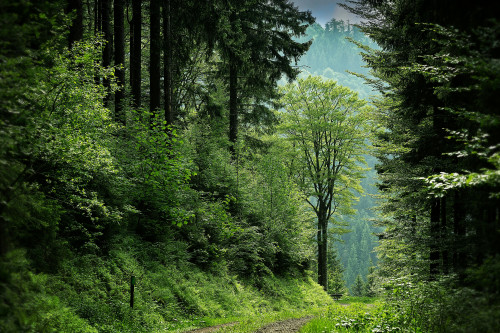
13th Oct, 2025
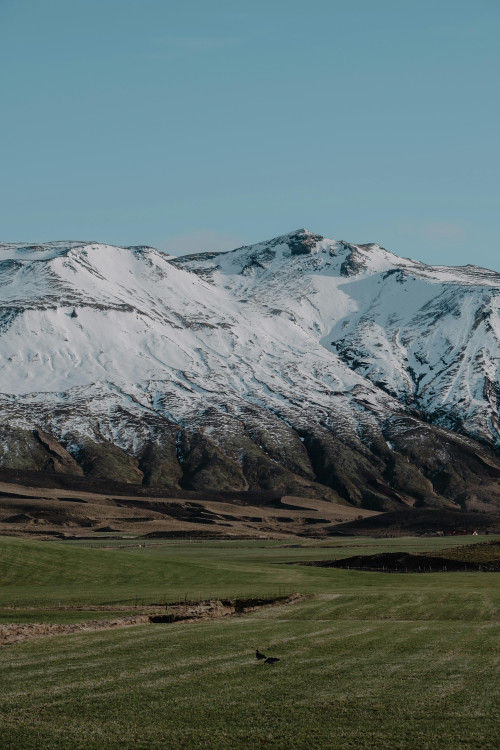
9th Oct, 2025
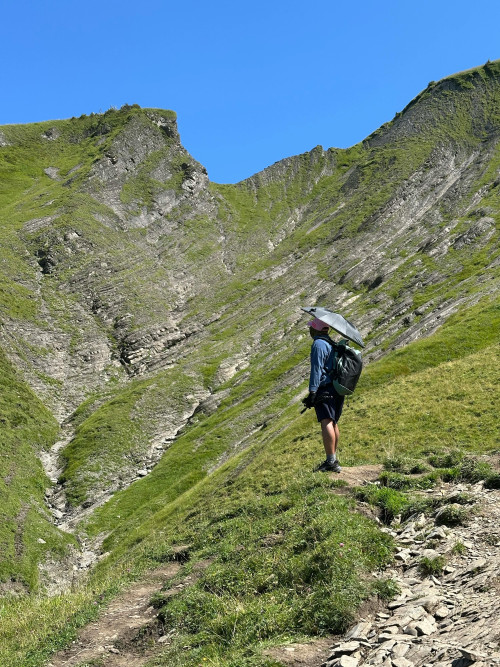
21st Sep, 2025
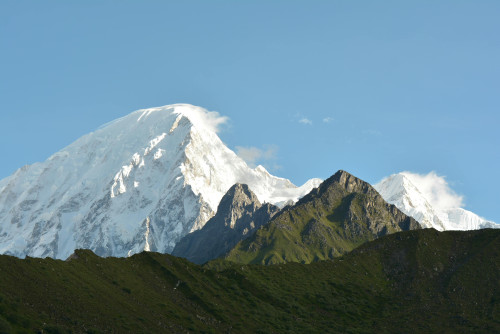
18th Sep, 2025

14th Sep, 2025

3rd Sep, 2025

28th Aug, 2025
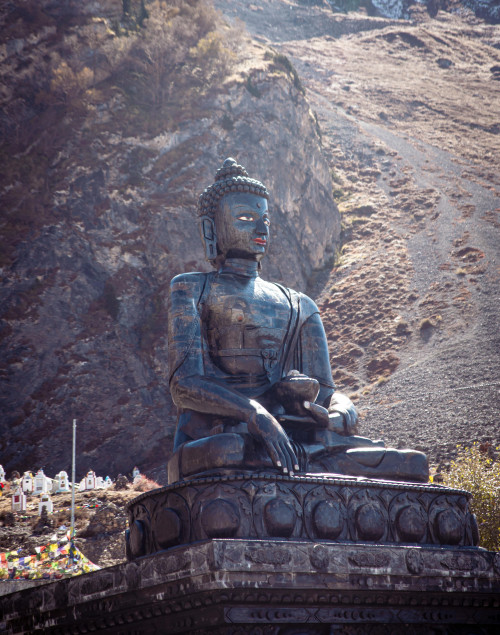
25th Aug, 2025
